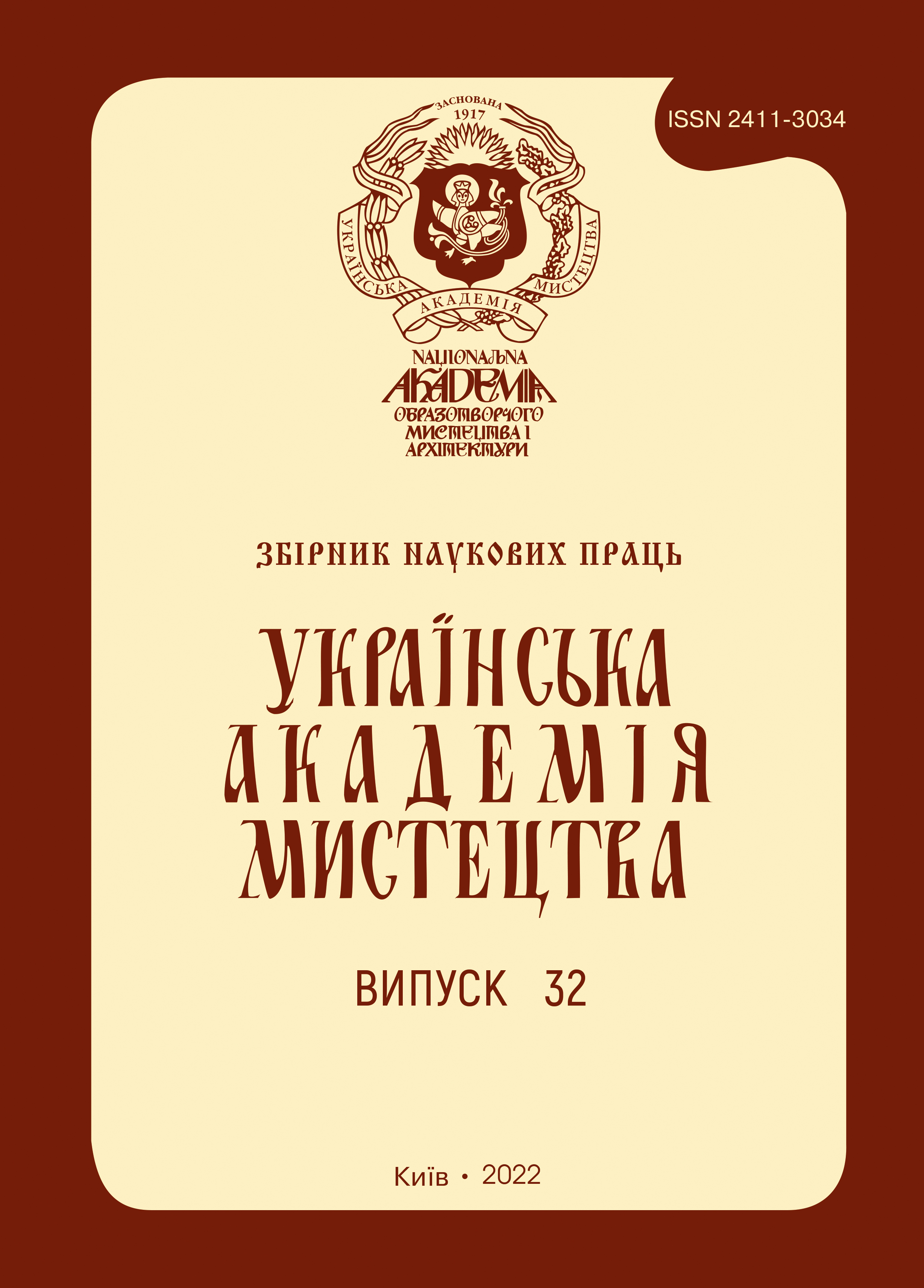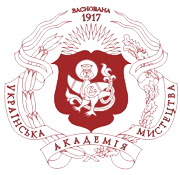DOMINANT SYMBOLS OF ETHNICITY IN THE WORK OF KYIV ARTISTS
DOI:
https://doi.org/10.32782/2411-3034-2022-32-8Keywords:
symbol, archetype, ethnos, fine art, painting, artist.Abstract
Abstract. The article examines the contextual and conceptual features of dominant ethnic symbols in the paintings of Kyiv artists. Through symbols, a message is transmitted, the deep meaning of which is revealed by reading hidden codes and signs. The source of archetypes is in the collective unconscious, which is why they are usually suprapersonal, as they combine memories and experiences of generations. The roots of the memory of generations are located simultaneously in the unconscious and in the present, it is a set of archetypes polished by myths, beliefs, customs and rites. The theme of primordial myth, archaism, spirituality and modern context is vividly interwoven in the work of Kyiv artists, in particular Ganna Gidora, Olexander Zhyvotkov, Olexander Sukholit, Anatoly Kryvolap, and Ganna Kryvolap. Artists strive to preserve the national cultural identity, addressing the authentic roots of the nation's culture and defending the uniqueness of their ethnicity. A complex interdisciplinary approach to the study and theoretical understanding of the dominant symbols of ethnicity in the paintings of Kyiv artists allows us to trace the connection between the modern context and cultural memory. The perspective of studying the dominant symbols of ethnicity as an important tool of intergenerational communication is closely related to aspects of the role in national and cultural identification, transformational processes of state pr ogress, and a sense of belonging to the nation.
References
25 років присутності. Сучасні українські художники / Ін-т проблем сучас. мистец. НАМ України. Т. 1, 2. Київ : Art Huss, 2016. 355 с.
Авраменко О. Миры Сухолита. День. 2020. 30 січня. № 16. URL: https://day.kyiv.ua/ru/article/kultura/miry-suholita (дата звернення: 17.05.2020).
Аккаш О. Українське візуальне мистецтво та можливості концептуалізації сучасності. Сучасне мистецво. 2016. Вип. XII. С. 31–41.
Животков А. Холст. Дерево. Картон. Работа с материалами 1984–2014. Альбом. Киев : Stedley Art Foundation, 2014. 288 с.
Балтазюк. І. Імплементація крос-культурного підходу в процес аналізу візуальної мови живопису. Грааль науки. 2021. № 2–3. С. 653–655. DOI: https://doi.org/10.36074/grail-ofscience. 02.04.2021.140.
Бойко С., Кожем’яка О. Український віночок: символи та значення квітів та стрічок. Новини України. 2015. 03 серпня. URL: http://www.newskraine.com.ua/ukrayinskiy-vinochok-simvoli-taznache/ (дата звернення: 20.09.20).
Гідора Г. Каталог / ред. Є. Шудра. Київ, 2008. 59 с.
Криволап Г. Причетність : каталог. Київ, 2019. 68 с.
Головата Н. Чудотворні ікони Богородиці та семіотика світового дерева. Українське релігієзнавство. 2019. № 87. С. 55–79.
Гоц Л. С. Архетип і архетипний образ: проблеми термінології у дослідженнях культури. Вісник Національної академії керівних кадрів культури і мистецтв. 2017. № 4. С. 52–57.
Животков О., Животков С., Животков О. Живопис. Каталог. Київ : Тріумф, 1997. 48 с.
Ложкина А. Анатолий Криволап: «Художника должны знать по работам, а не в лицо». Art Ukraine. 2011. 25 жовтня. URL: https://artukraine.com.ua/a/anatoliy-krivolap-hudozhnikadolzhny-znat-po-rabotam-a-ne-v-lico/#.Xu49D2j7RPY (дата звернення: 20.06.20).
Обираючи гармонію Всесвіту. АВС-арт. 2014. 04 грудня. URL: http://avs-art.com.ua/exhibition/gallery/news:Antyp (дата звернення: 11.05.20).
Петрова О. Третє Око: Мистецькі студії : монографічна збірка статей. Київ : Фенікс, 2015. 480 с.
Символи природи. Модульне середовище для навчання. URL: https://cutt.ly/CXITviM (дата звернення: 09.07.20).
Скляренко Г. Я. Сучасне мистецтво України. Портрети художників. Київ : ArtHuss, 2018. 376 с.
Сніжко В., Отрошко Л. Творчість через Символ : монографія. Сімферополь : Таврія, 2010. 236 с.
Danylova T. Overcoming the Cultural Differences: Parable as a Means of Intercultural Dialogue. Anthropological Measurements of Philosophical Research. 2013. Is. 3. P. 42–51.
Eco U. The open work / Trans. A. Cancogni. Cambridge, Mass. : Harvard University Press, 1989. 285 p.




